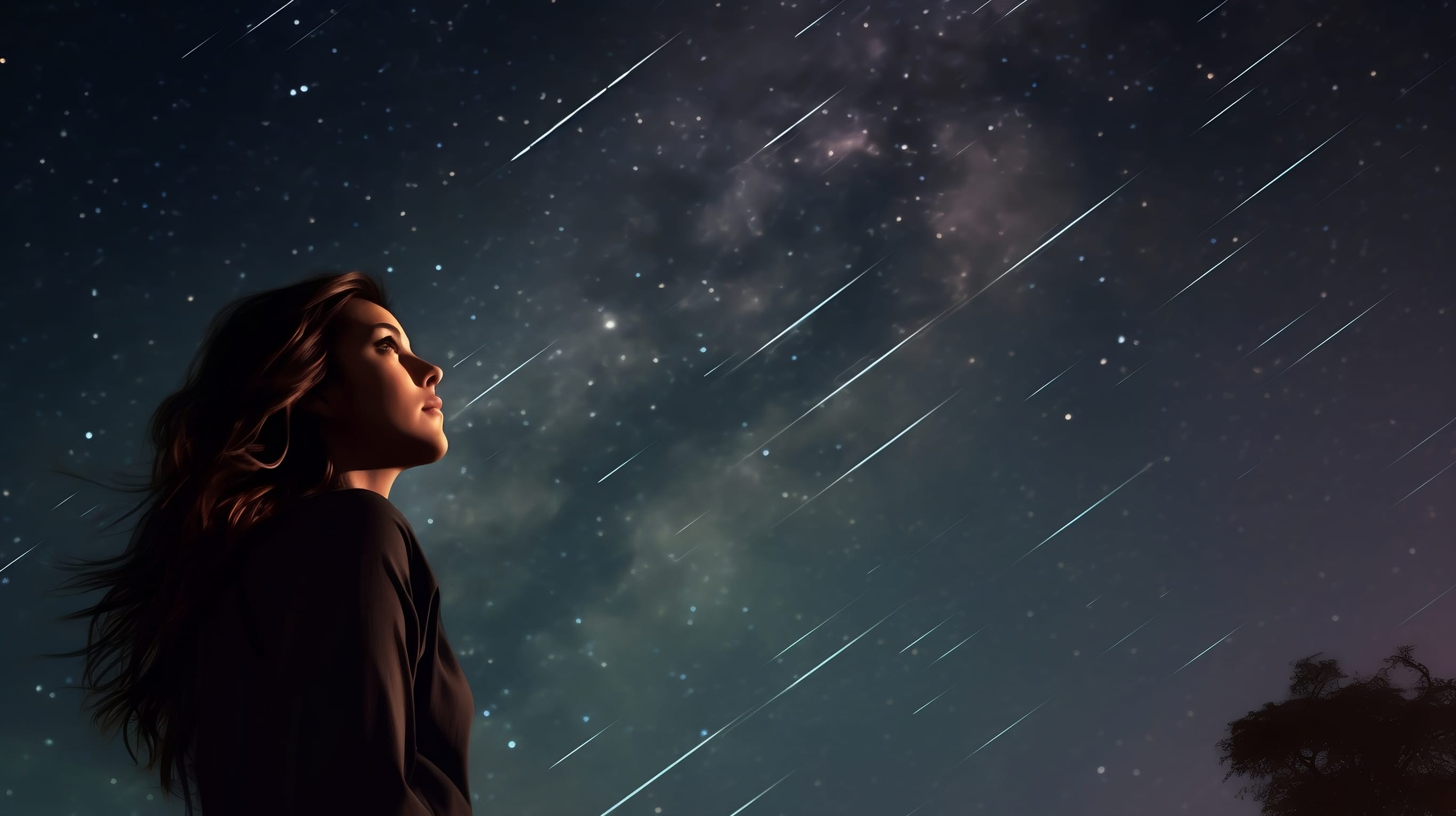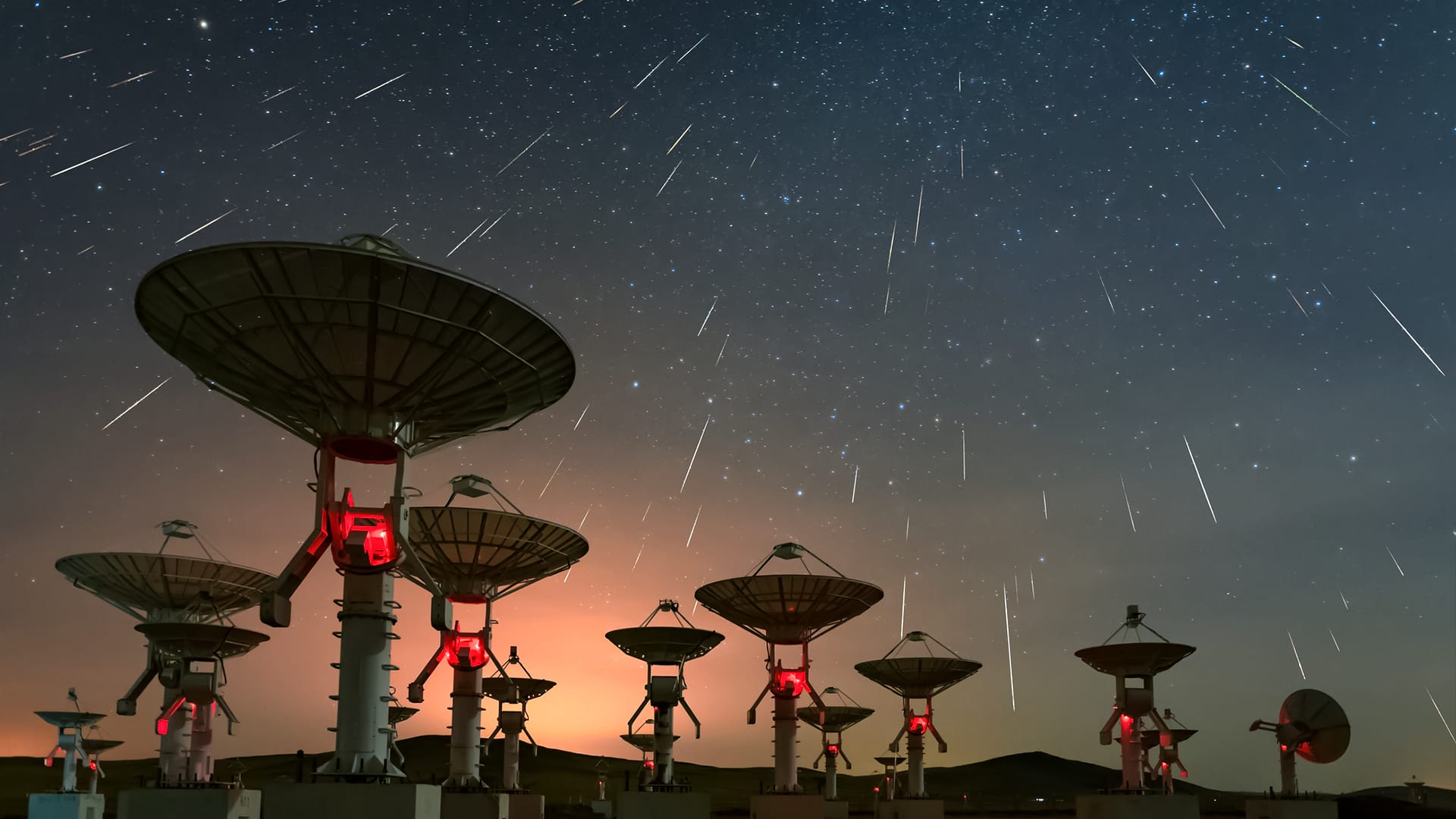Meteor Showers in September 2026: When & Where to See?
Two notable meteor showers will light up the skies this September. Want to catch shooting stars? Use the Sky Tonight app to check the peak dates, see the radiant’s position in your sky, and set reminders so you don’t miss the best viewing time. Read on to learn everything about September’s meteor showers!
Contents
- August 31 – September 1: Aurigids
- September 9–10: September Epsilon Perseids
- Daytime Sextantids 2026
- When is the next meteor shower?
- See Meteor Showers in September 2026
August 31 – September 1: Aurigids
- Designation: 206 AUR
- Meteors per hour: 6
- Moon illumination: 82%
- Active: August 28 – September 5
- Radiant location: Auriga
- Best visible from: Northern Hemisphere
- Description: The Aurigids are a minor meteor shower with occasional outbursts of activity. Their parent body is comet Kiess (C/1911 N1). The most recent outburst of the Aurigids was registered in 2021: the shower produced 80-100 meteors within a brief period of about 1 hour.
Aurigids visibility forecast
In 2026, the Aurigids will be largely spoiled by moonlight: the peak occurs only a few days after the Full Moon, so most of the faint meteors will be drowned out. If you still choose to watch the shower, try to hide the Moon behind a tree or building and look toward a darker part of the sky instead. You can read more about the Aurigids in our article.
September 9–10: September Epsilon Perseids
- Designation: 208 SPE
- Meteors per hour: 8
- Moon illumination: 2%
- Active: September 5 – September 21
- Radiant location: Perseus
- Best visible from: Northern Hemisphere
- Description: Don't confuse this meteor shower with the famous August Perseids! Unlike the August Perseids, the September Epsilon Perseids are not caused by the comet 109P/Swift-Tuttle. Presumably, the parent body of the Epsilon Perseid meteors is an unknown long-period comet. Radiating from a point near the star Epsilon Persei in central Perseus, these swift meteors enter the Earth’s atmosphere at a velocity of 64 km/s.
September Epsilon Perseids visibility forecast
In 2026, the September Epsilon Perseids (ε-Perseids) will finally get their moment to shine: they reach their peak just before the New Moon, on September 9 at around 18:00 GMT, so observing conditions will be excellent. With the sky nicely dark, even the fainter meteors will be visible. At mid-northern latitudes, you can head outside from about 10–11 p.m. local time and enjoy the shower under nearly ideal skies.
Daytime Sextantids 2026
- Peak of activity: October 1–2
- Designation: 221 DSX
- Meteors per hour: 5
- Moon illumination: 71%
- Active: September 20 – October 6
- Constellation: Sextans
- Visible from: Both hemispheres
The Daytime Sextantids typically reach their maximum in September, but in 2026, they peak in October. To learn more, read our dedicated article about the October meteor showers.
When is the next meteor shower?
After September, the next meteor showers to watch are the Draconids on October 9, a usually modest shower that can sometimes have unexpected outbursts of activity, and the Orionids on October 21, which can produce up to 20 meteors per hour. Both are worth adding to your October skywatching calendar!
Our stargazing app Sky Tonight will help you quickly determine the peak time of a meteor shower and the position of its radiant, check the Moon's phase, and get other useful and interesting information for meteor hunting. Here is how to do it in three steps:
- Tap the calendar button on the main screen.
- Go to the “Meteors” tab to see which meteor showers are currently active. Each active shower in the calendar is marked with a colored line; peaks of activity are marked with dots.
- Find the meteor shower you want to observe and tap the target button next to its name. The app will show the position of the shower’s radiant on the sky map on a given date.
Get more tips for watching meteors to maximize your chances of catching the spectacular stellar show in the sky, and then take our quiz about meteor showers to see how well you've prepared for meteor hunting!

See Meteor Showers in September 2026
In September 2026, the Aurigids will be hampered by bright moonlight, so only a few meteors may break through the glare. The real highlight will be the Epsilon Perseids, peaking under a nearly Moon-free sky and offering excellent viewing conditions — especially for observers in the Northern Hemisphere. Get the Sky Tonight and Star Walk 2 apps to keep up with the best celestial events every month.
Wishing you clear skies and happy observations!
